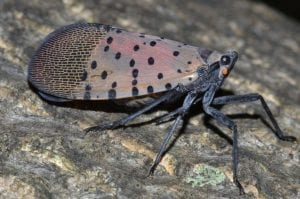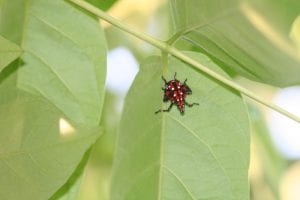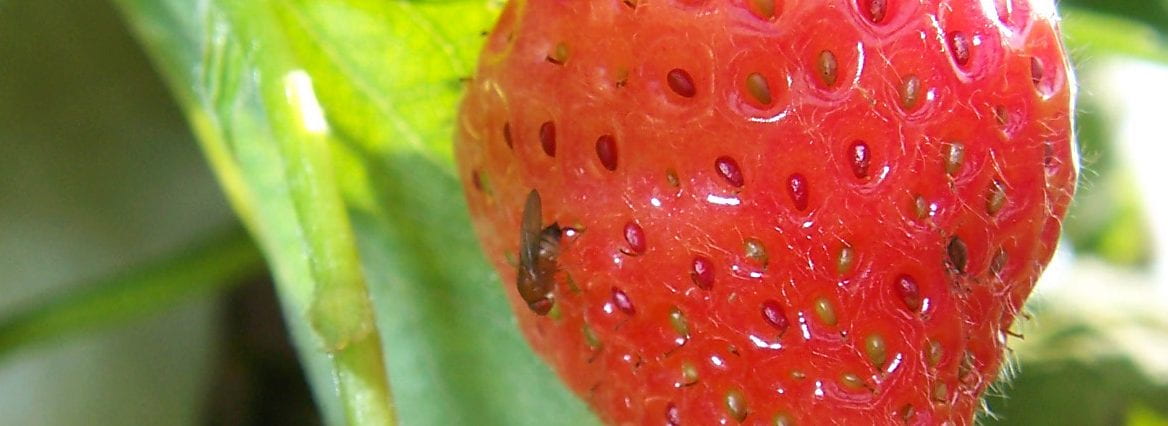
The New York State Departments of Environmental Conservation (DEC) and Agriculture and Markets (DAM) today confirmed that spotted lanternfly (SLF), an invasive pest from Asia, has been found in Albany and Yates counties. A single adult insect was discovered in a vehicle in the Capital District. In addition, a single adult insect was reported on a private Keuka Lake property in Penn Yan, Yates County.
State agencies encourage the public to report findings of spotted lanternfly, an invasive pest. More details about this insect are below the press release.
DEC and our partners at the Department of Agriculture and Markets are closely tracking the spotted lanternfly, a destructive invasive pest, as part of our ongoing efforts to prevent its establishment and spread in New York. This pest has the potential to severely impact our state's agricultural and tourism industries,” DEC Commissioner Basil Seggos said. “We are encouraging the public to send us information to bolster our efforts—they are our eyes on the ground.”
Following both reported cases, DEC and DAM immediately began extensive surveys throughout the area. At this time, no additional insects have been found. DEC and DAM urge New Yorkers to report potential sightings to spottedlanternfly@dec.ny.gov. Anyone that suspects they have found SLF is encouraged to send a photo to spottedlanternfly@dec.ny.gov.
State Agriculture Commissioner Richard A. Ball said, “It’s critical that we monitor for and control this invasive species, which can weaken plants and have a devastating impact on our farm crops and agricultural production, especially apples, grapes and hops. Since our farmers are among those facing the greatest potential impact, we ask them to join us in helping to watch for the spotted lanternfly, and signs of infestation, and report any sightings immediately.”
SLF (photo above) is a destructive pest that feeds on more than 70 plant species including tree-of-heaven (Ailanthus altissima), maples, apple trees, grapevine, and hops. SLF feedings can stress plants, making them vulnerable to disease and attacks from other insects. SLF also excretes large amounts of sticky "honeydew," which attracts sooty molds that interfere with plant photosynthesis, negatively affecting the growth and fruit yield of plants. SLF also has the potential to significantly hinder quality of life due to the honeydew and the swarms of insects it attracts.
SLF was first discovered in Pennsylvania in 2014 and have since been found in New Jersey, Delaware and Virginia. Given the proximity to the Pennsylvania and New Jersey infestations, New York State is at high risk for infestation. While these insects can jump and fly short distances, they spread primarily through human activity. SLF lay their eggs on any number of surfaces such as vehicles, stone, rusty metal, outdoor furniture and firewood. Therefore, the insects can hitch rides on any outdoor item and be easily transported into and throughout New York.
Jennifer Grant, Ph.D., Cornell University Director New York State IPM Program said, “Knowing that this pest was likely to arrive, we have been working with our State partner agencies to develop integrated strategies to get the word out and manage SLF in grapes, hops, apples and other susceptible crops. It’s imperative that the public help slow the invasion and spread by reporting possible sightings and acting responsibly when traveling in quarantine areas.”
Adult SLF are active from July to December. They are approximately one-inch long and half an inch wide at rest, with eye-catching wings. Adults begin laying eggs in October. Signs of an SLF infestation may include:
- Sap oozing or weeping from open wounds on tree trunks, which appear wet and give off fermented odors.
- One-inch-long egg masses that are brownish-gray, waxy and mud-like when new. Old egg masses are brown and scaly.
- Massive honeydew build-up under plants, sometimes with black sooty mold developing.
Anyone that suspects they have found SLF is encouraged to send a photo to spottedlanternfly@dec.ny.gov. Please note the location of where the insect was found, egg masses, and/or infestation signs. DEC and DAM also encourage the public to inspect outdoor items such as vehicles, furniture, and firewood for egg masses. Anyone that visits the Pennsylvania or New Jersey Quarantine Areas should thoroughly inspect their vehicle, luggage and gear for SLF and egg masses before leaving and scrape off all egg masses.
A Smartphone app is also available to help citizens and conservation professionals quickly and easily report new invasive species sightings directly to New York’s invasive species database from their phones. For more information, visit http://www.nyimapinvasives.org/ (leaves DEC website).
DEC, DAM, New York State Office of Parks, Recreation and Historic Preservation and the US Department of Agriculture will continue to survey throughout the Capital District and the Finger Lakes focusing on travel corridors and high-risk areas. Extensive surveys will continue to be conducted in high-risk areas throughout the state as well as inspections of nursery stock, stone shipments, commercial transports, etc., from Pennsylvania. DEC and DAM will also continue its efforts to educate the public as well as industry personnel.
For more information on SLF, visit www.dec.ny.gov/animals/113303.html.
###
Connect with DEC on: Facebook, Twitter, Flickr, and Instagram
18-290
Spotted Lanternfly (Lycorma delicatula) Update:
The spotted lanternfly (SLF), also known as Chinese blistering cicada, is a plant hopper with piercing sucking mouthparts.
Discovered in Pennsylvania in 2014, the spotted lanternfly presents a threat to both woody and non-woody hosts that are present throughout the United States. While their list of hosts is large, the greatest agricultural concern falls on crops such as grapes, apples, stone fruits, blueberries, and hops. Its presence could lead to crop loss and increased management costs.

Spotted lanternfly lays eggs on any smooth and strong surface, including plant material, stones, bricks, metal, and plastic. Each egg mass contains 30-50 eggs in rows, usually covered in a mud-like substance. Spotted lanternfly may require Tree of Heaven (Ailanthus altissima) to complete all life stages; however, research is underway to confirm if SLF can use other species—such as black walnut or hops. One generation occurs per year: adults develop in July, lay eggs in September, which overwinter. The first three instars are wingless, black with white spots, while the final instars turn red before becoming adults.
Both adults and nymphs commonly gather in large numbers on host plants to feed, and are easiest to see at dusk or at night. Extensive feeding causes sap to ooze from trunks and branches, and a fermented odor can occur over time. Honeydew excretions also encourage sooty mold build-up on leaves, fruit, and around the bases of trees.

